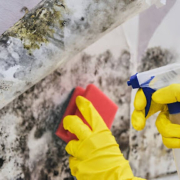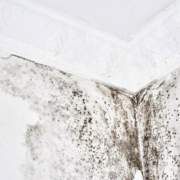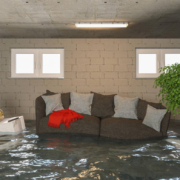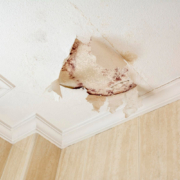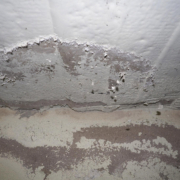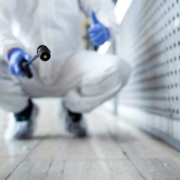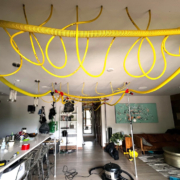A Guide to Preventing Water Damage
Introduction
Water damage can cause extensive damage to your home and pose health risks. It is usually caused by leaks, floods, or lack of maintenance. Dealing with water damage can be disruptive and expensive. While having insurance is important, it may not always cover all the costs.
It is crucial to take steps to prevent water damage in your home. This guide will provide you with practical tips and strategies to protect different areas of your home from water damage. By following these preventive measures, you can:
- Minimize the risk of future water incidents
- Reduce the need for costly repairs
Stay proactive and safeguard your home from water damage!
1. Common Causes of Water Damage
Understanding the common causes of water damage can help you identify potential risks and take appropriate preventive actions in a timely manner. Here’s a detailed look at some typical sources of water damage and how you can mitigate these risks.
1.1. Faulty Pipe Joints
Importance of Regular Inspection and Maintenance
Regularly inspecting your pipe joints can prevent small issues from becoming major problems. Look for signs such as water stains on walls or ceilings, dampness around joints, or an unusual increase in your water bill.
How to Detect and Fix Leaks in Pipe Joints
- Visual Inspection: Check for visible signs of corrosion, rust, or wet spots around pipe joints.
- Pressure Test: Conduct a pressure test to see if the pipes can hold their rated pressure without leaking.
○ Fixing Leaks: Temporary Fixes: Use plumber’s tape or epoxy putty to seal minor leaks temporarily.
○ Permanent Solutions: Replace damaged sections of the pipe or joint. Professional assistance may be necessary for extensive repairs.
1.2. Appliance-related Issues
Role of Air Conditioning and Heaters in Moisture Buildup
Air conditioning units can produce condensation that might lead to moisture buildup if not properly drained. Heaters, especially those that use water for heating, can also contribute to leaks and moisture issues.
Preventive Maintenance for These Appliances to Avoid Water Damage
○ Air Conditioning Units:Ensure that the condensate drain line is clear and free from blockages.
○ Inspect the drip pan regularly and replace it if it’s cracked or damaged.
○ Heaters: Check for any signs of rust or corrosion on the heater’s exterior.
○ Ensure that all connections are tight and there are no visible leaks.
1.3. Importance of Ventilation Systems
How Proper Ventilation Can Prevent Condensation Issues
Proper ventilation helps control humidity levels inside your home, reducing the chance of condensation that can lead to mold growth and structural damage.
Tips for Keeping Ventilation Systems Clean and Functional
- Regular Cleaning: Clean exhaust fans, dryer vents, and other ventilation components to ensure they are free from dust and debris.
- Filter Maintenance: Replace filters in HVAC systems regularly according to manufacturer guidelines.
- Check Ventilation Paths: Ensure that air vents are unobstructed by furniture or other items to allow free airflow.
By understanding these common causes of water damage—faulty pipe joints, appliance-related issues, and inadequate ventilation—you can take proactive steps to safeguard your home against costly repairs and potential health hazards.

2. Kitchen Area
The kitchen area is a high-risk zone for water damage, mainly due to the presence of multiple water-using appliances and fixtures. Identifying potential vulnerabilities and implementing preventive measures can go a long way in safeguarding your kitchen from water-related issues.
2.1 Safeguarding Against Refrigerator Leaks
Refrigerator leaks can cause significant damage if not addressed promptly. Regular maintenance is essential to prevent overflow situations.
- Checking and Draining the Drip Pan:
○ The refrigerator pan, which collects condensation, should be checked regularly.
○ Ensure it’s drained properly to avoid any overflow that might lead to water damage.
○ Clean the pan periodically to prevent mold growth.
Example: A homeowner noticed water pooling under their refrigerator. Upon inspection, they found the drip pan was full and had not been cleaned in months. Draining and cleaning the pan resolved the issue immediately.
2.2 Maintaining Dishwasher Integrity
Dishwashers are another common source of kitchen water damage. Proper installation and routine checks can minimize risks.
- Inspecting Door Gaskets and Hoses:
○ Look for signs of wear and tear on door gaskets.
○ Check hoses for any leaks or cracks that could lead to water seeping out during operation.
- Ensuring Secure Connections with the Water Supply Line:
○ Make sure all connections are tight and secure.
○ Incorrectly installed dishwashers often lead to leaks; consider hiring a professional if you’re unsure about the installation process.
Example: During a routine check, a homeowner discovered a small crack in their dishwasher hose. Replacing it prevented what could have been a serious leak, saving them from potential flooring damage.
2.3 Garbage Disposal Best Practices
Garbage disposals, if not maintained properly, can become sources of clogs and leaks.
- Avoiding Clogs and Leaks Through Responsible Use:
○ Avoid disposing of fibrous materials like celery or potato peels that can cause clogs.
○ Run cold water while using the disposal to help solidify any grease or fat, making it easier for the blades to chop them up.
- Routine Cleaning to Prevent Foul Odors and Potential Water Backups:
○ Use a combination of baking soda and vinegar to clean your disposal once a month.
○ Grinding ice cubes can help clean the blades and remove debris buildup.
Example: A family noticed foul odors emanating from their sink. By routinely cleaning their garbage disposal with baking soda and vinegar, they eliminated both the smell and reduced the risk of future clogs.
Effective maintenance practices in these key areas ensure that your kitchen remains free from unwanted water damage, prolonging the lifespan of your appliances and keeping repair costs at bay.
3. Bathroom Maintenance
Maintaining the bathroom area is essential for preventing water damage. Given the frequent use of water, it’s a hotspot for potential leaks and moisture problems. Routine checks and proper maintenance can save you from costly repairs and ensure a dry, safe environment.
3.1. Detecting and Repairing Leaky Toilets
Silent toilet leaks may seem insignificant but can cause extensive damage over time. These leaks often go unnoticed until they have already caused significant harm.
○ How to Identify Silent Leaks:Regularly check your toilet for silent leaks by adding a few drops of food coloring to the tank. Wait for about 10 minutes without flushing. If you see color in the bowl, you have a leak.
○ Inspect around the base of the toilet for any signs of moisture or discoloration.
○ Preventive Measures:Flapper Valve Replacement: The flapper valve is a common culprit in silent toilet leaks. Replace it every few years to maintain an effective seal.
○ Regular Inspections: Make it a habit to inspect your toilet’s internal components periodically. Look for wear and tear on parts such as the flush valve, flapper, and fill valve.
○ Professional Assessments: Consider having a plumber conduct annual inspections to catch issues early before they escalate.
3.2. Mitigating Risks Associated with Cleaning Agents
Many traditional cleaning agents contain harsh chemicals that can deteriorate grout and seals over time, leading to water damage.
○ Safe Alternatives:Opt for vinegar-based cleaners which are effective yet gentle on surfaces.
○ Baking soda is another excellent alternative for scrubbing without causing damage.
○ Tips for Use:Avoid using bleach or acidic cleaners regularly as they can erode grout lines and seals.
○ When using any cleaning agent, always follow up with a thorough rinse to remove any residue that might degrade materials over time.
Routine Maintenance Tips:
- Seal Maintenance: Regularly check and maintain seals around bathtubs, showers, and sinks. Reseal if you notice any cracks or deterioration.
- Ventilation: Ensure your bathroom has adequate ventilation to prevent moisture build-up. Use exhaust fans during and after showers.
- Grout Care: Keep grout lines clean and intact. Reapply grout sealer annually to maintain its protective barrier against water infiltration.
By focusing on these maintenance efforts in your bathroom area, you significantly reduce the chances of encountering water damage. Proper care of toilets and cautious use of cleaning agents are small steps that make a big difference in safeguarding your home from water-related issues.
4. Laundry Area Care
To prevent water damage in the laundry area, it’s important to regularly check for issues and use smart storage options. The laundry room is prone to water leaks and drainage problems, but with proactive maintenance, you can reduce the risk.
4.1. Extending the Lifespan of Washing Machine Hoses
Washing machine hoses often cause water leaks in the laundry area. By inspecting them regularly, you can catch any signs of damage before they become major issues.
Signs of Wear and Tear:
Here are some things to look out for when inspecting your washing machine hoses:
- Cracks or Bulges: Check for visible cracks or bulges on the hoses, as these can indicate weakness.
- Rust or Corrosion: Examine the metal fittings for any signs of rust or corrosion, as these can weaken the hose.
- Dampness Around Connections: If you notice moisture around the hose connections, there may be a slow leak that needs to be addressed.
Upgrading your washing machine hoses is an effective way to improve their durability and minimize the chances of leaks.
Braided Stainless Steel Hoses:
Consider replacing your old rubber hoses with braided stainless steel ones. These offer better strength and flexibility, making them less likely to burst when under pressure. They are a reliable choice for long-term use.
4.2. Storage Solutions for Water Damage Prevention
Proper storage is key to preventing water damage in the laundry area. Using watertight plastic containers is an excellent option for protecting your belongings from potential leaks or spills.
Benefits of Using Watertight Plastic Containers:
Here’s why watertight plastic containers are a great choice for laundry room storage:
- Protection from Moisture: Even if there’s a leak or spill in the laundry area, these containers will keep your items dry.
- Durability: Plastic containers are resistant to warping and cracking, ensuring they can withstand everyday use.
- Organization: They help you keep your laundry supplies neat and easily accessible while also providing an extra layer of defense against water damage.
Regularly inspecting your laundry area and using practical storage solutions is a proactive approach to preventing water damage in this high-risk part of your home. By addressing potential issues early on, you can effectively maintain the condition of your water supply lines and drainage systems.
5. Other Areas of the Home to Consider
Addressing potential vulnerabilities outside the main living spaces is crucial for comprehensive water damage prevention. These often-overlooked areas can be just as susceptible to water-related issues, necessitating vigilant monitoring and proactive measures.
5.1. Protecting Outdoor Faucets from Freezing
Outdoor faucets are particularly vulnerable during colder months when temperatures drop below freezing. Water left in the pipes can freeze, expand, and cause the pipes to burst, leading to significant water damage.
Winterization Techniques:
- Disconnect Hoses: Remove any hoses connected to outdoor faucets before winter sets in.
- Install Frost-Free Faucets: Consider replacing standard outdoor faucets with frost-free models designed to prevent freezing.
- Insulate Pipes: Use foam pipe insulation or faucet covers to protect exposed pipes from low temperatures.
- Shut Off Valves: If possible, turn off the water supply to outdoor faucets using an indoor shut-off valve and drain any remaining water from the pipes.
5.2. Sump Pumps: A Crucial Line of Defense
Sump pumps play a vital role in preventing basement flooding by removing excess water that accumulates in a sump basin, typically found in the basement of homes.
Ensuring Sump Pump Functionality:
- Regular Testing: Periodically check the sump pump to ensure it is operating correctly. Pour a bucket of water into the sump pit; if the pump activates and removes the water efficiently, it’s functioning well.
- Backup Power Source: During power outages, your sump pump can fail, leading to potential flooding. Installing a battery backup system or a generator ensures that your sump pump remains operational even without main power.
- Routine Maintenance: Inspect the sump pump for any signs of wear and tear. Clean out debris from the sump pit, check the discharge line for clogs or freezing (in colder climates), and ensure it directs water away from your home’s foundation.
Examples:
- A homeowner who frequently experiences power outages installed a battery backup for their sump pump. This simple addition has saved them from basement flooding multiple times during storms.
- By insulating exterior pipes and installing frost-free faucets, another homeowner successfully prevented pipe bursts during a harsh winter, thereby avoiding costly repairs.
Proactively addressing these areas helps mitigate risks outside your main living spaces, ensuring a more robust defense against potential water damage throughout your entire home.
Maintaining a Comprehensive Homeowner’s Insurance Policy
While it’s important to take preventive measures, having enough insurance coverage is still crucial for unexpected water damage incidents. Knowing what types of water-related dangers are typically covered by standard homeowner’s insurance policies can give you peace of mind. These usually include:
- Sudden and accidental discharge of water: This could happen from burst pipes or broken appliances.
- Overflow from plumbing or heating systems: Problems with washing machines, dishwashers, or HVAC systems often fall into this category.
- Rainwater damage: Damage caused by rain that enters through a damaged roof or window.
To navigate the insurance claim process effectively, you need to document everything in a timely and accurate manner. If you do experience water damage, here are some immediate steps you should take:
- Take photos of the damage.
- Document how extensive the loss is.
- Contact your insurance provider right away.
Doing these things will help make the claims process smoother.
Encouraging immediate action in implementing the preventive strategies discussed throughout this guide is vital. Regularly reviewing and updating your insurance policies ensures sufficient coverage against potential risks. Ensuring your policy includes adequate protection for water damage prevention and property damage will safeguard your home against unexpected incidents. Regularly consulting with your insurance agent to understand any changes or updates to your coverage is also beneficial.
Conclusion
Taking a proactive approach to water damage prevention is essential for safeguarding the structural integrity and financial well-being of your home. By implementing the preventive strategies discussed in this guide, you can significantly reduce the risk of costly repairs and disruptions caused by water damage.
Key Takeaways:
- Regular maintenance of plumbing systems and appliances
- Proper ventilation to prevent moisture buildup
- Immediate repair of any detected leaks or potential vulnerabilities
Your proactive measures will not only protect your property but also provide peace of mind.
Share Your Experiences:
We encourage you to share your own experiences and additional tips for preventing water damage in the comments section below. Your insights can help others better protect their homes, fostering a sense of community engagement around this vital topic.
By staying informed and vigilant, you can effectively manage the risks associated with water damage.


